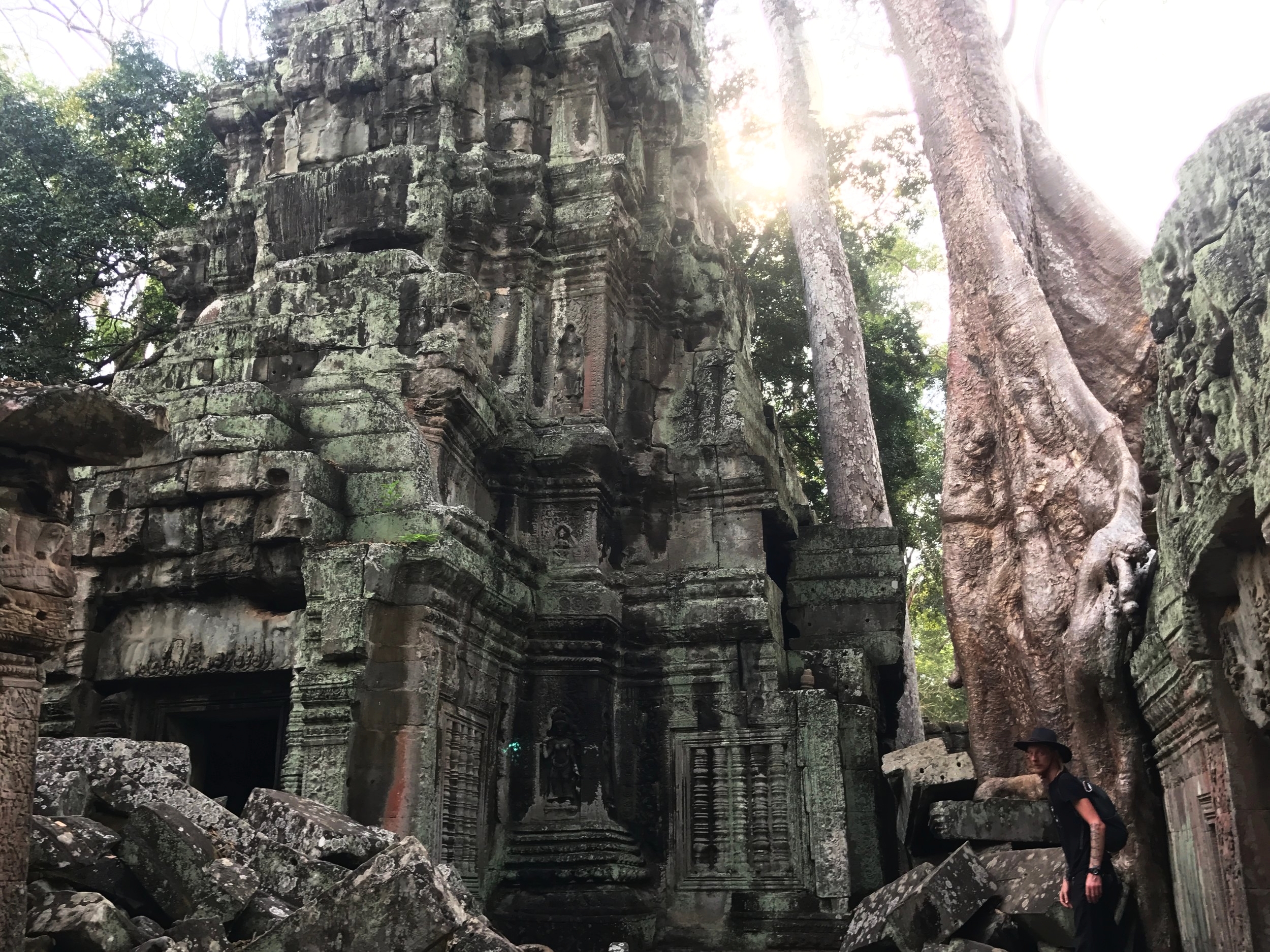Siem Reap
Roaming the temple complex of Ta Prohm makes you feel like an old world explorer whose come upon this ancient site while trekking through the jungle. Around every corner, through every doorway and down every hall you find the duality of growth and decay. Enormous silk cotton ceiba trees emerge from the walls and roofs of temples, wrapping their roots around something that once was. Piles of rubble decorated with intricate carvings lay beside edifices both destroyed and reconstructed, withstanding the test of time.
A BRIEF HISTORY OF TA PROHM
On the outskirts of modern day Siem Reap, Ta Prohm was built in the late 12th and early 13th centuries under King Jayavarman VII as a Buddhist monastery and university dedicated to his mother. Though many of the temples of Angkor were built in the ‘temple pyramid’ or ‘temple mountain’ style, such as Angkor Wat, Bayon, and Pre Rup, Ta Prohm was built in a flat style: a series of five rectangular nesting walls enclose a central inner sanctuary.
Also unlike most of the temples of Angkor, Ta Prohm has been left much in the condition in which it was found by westerners in the 1800s due to the magic of how it has merged with the jungle over time. The site has been conserved and restored by both the Ecole Francaise d’Extreme-Orient, and the Archaeological Survey of India. The temple was famously used in the film Tomb Raider in 2001, returning it to the international spotlight and cultivating mass appeal.
Consequently, it is one of the most visited temples of Angkor due to its awe-inspiring setting. Surrounded by jungle, the crumbling temples have literally grown trees, giving visitors the feeling they are discovering a hidden treasure.
Like all of the popular Angkorian archeological sites, expect to see many other tourists, but know there are also plenty of opportunities to find yourself alone as you wander these magnificent ruins.
ENJOY YOUR VISIT!
Ta Prohm evoked something deep in our core. It reminded us of the simultaneous transience and timelessness of life, to enjoy what we have, to be present and grateful for the ability to travel across the world and stand in the heart of such a potent site, a place that one day, like all things, will return to its source.
















